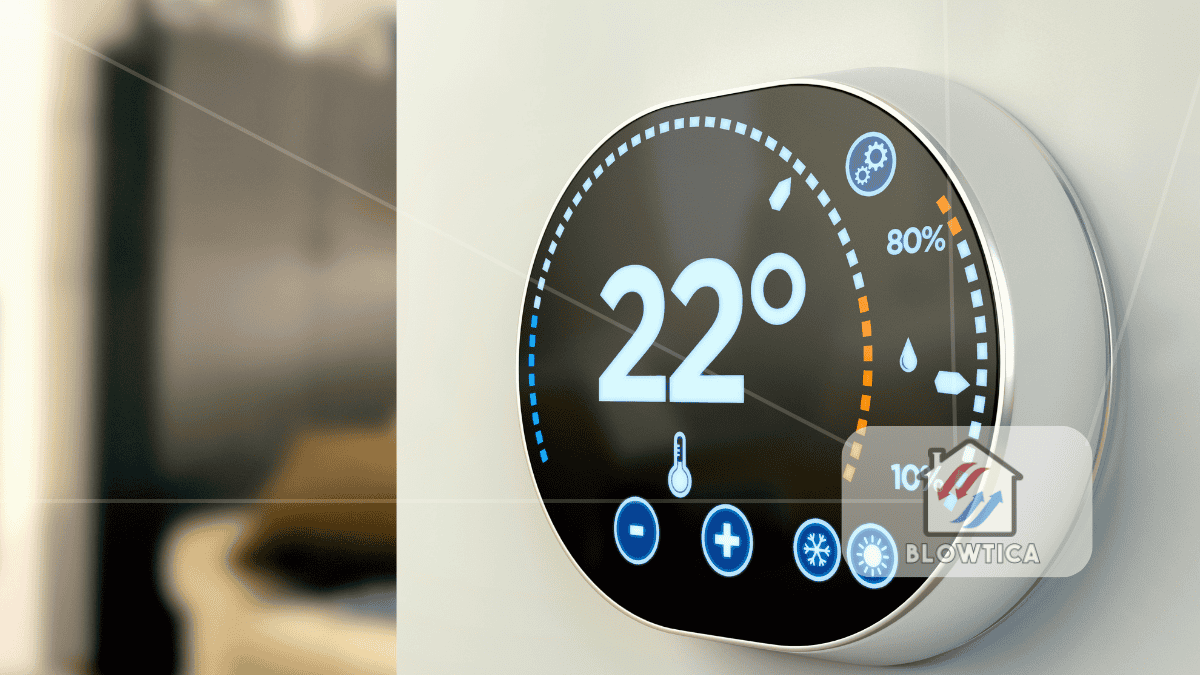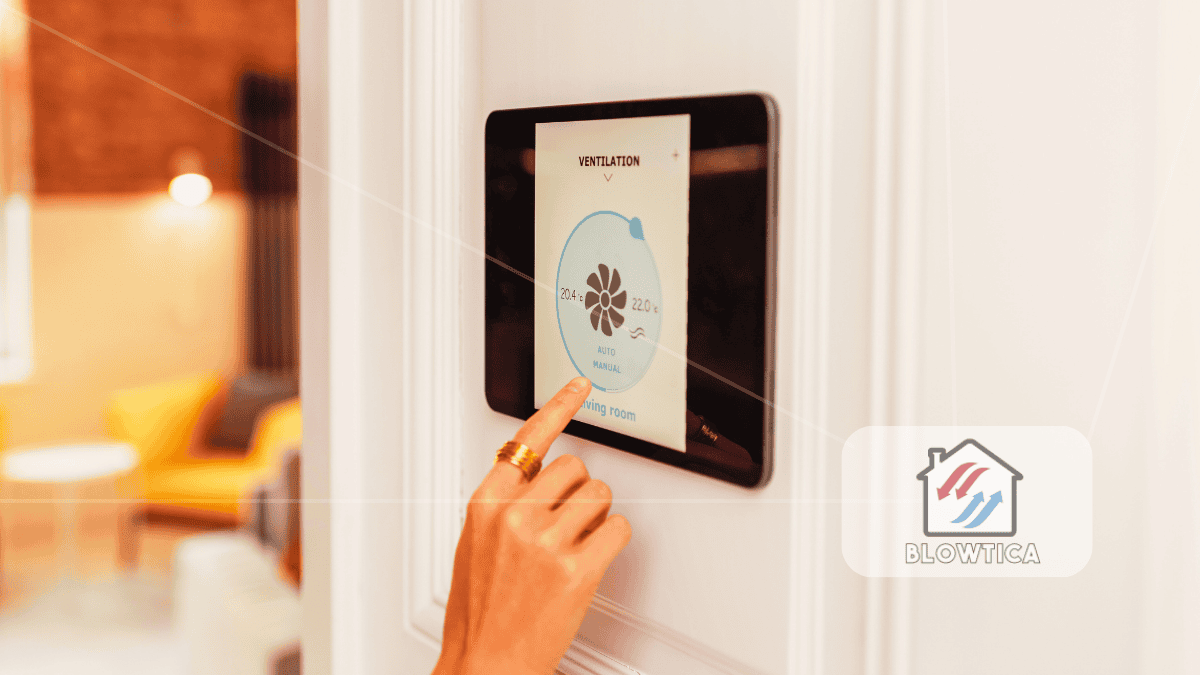
In homes and buildings across the world, heating and cooling are quietly responsible for massive amounts of energy use—and waste. But a growing number of homeowners are finding a smarter way to manage comfort while trimming costs and emissions: smart thermostats.
More than just digital thermostats, these devices use automation, learning algorithms, and real-time data to adjust temperatures with minimal input from users. As one of the top HVAC upgrades available today, smart thermostats are changing how we think about climate control—from a set-it-and-forget-it tool to a responsive, intelligent partner in energy efficiency.
Why Traditional Thermostats Fall Short
Older manual and programmable thermostats do one thing: maintain a temperature. But they don’t know when you’ve left the house early, gone on vacation, or shifted your schedule. Even programmable models rely on users setting fixed times, which often don’t match real-world behavior.
The result? Heating or cooling continues even when no one’s home. That’s not just inefficient—it’s expensive.
According to the U.S. Department of Energy, households could save up to 10% a year on heating and cooling by turning thermostats down 7°–10°F for eight hours a day. But most people don’t remember or bother. Smart thermostats solve this by learning and adapting automatically.
What Makes a Thermostat “Smart”?
A smart thermostat connects to Wi-Fi and uses sensors, scheduling algorithms, and remote access tools to manage your home’s temperature based on patterns—not guesswork. Some models even factor in humidity, occupancy, and weather forecasts.
Key features include:
- Auto-Scheduling: Learns your preferences over time.
- Remote Access: Adjust settings from your phone, even when you’re away.
- Geofencing: Detects when everyone has left and sets to energy-saving mode.
- Weather Integration: Adjusts based on local conditions.
- Room Sensors: Monitors temperature and motion across multiple zones.
- Energy Reports: Offers insight into energy use and suggests ways to improve.
It’s not just about temperature control—it’s about situational awareness and making smarter decisions on your behalf.
Real-World Savings That Stack Up
Most homeowners want to cut energy costs without sacrificing comfort. That’s where smart thermostats shine. According to ENERGY STAR, the average user saves 8–10% annually on heating and cooling costs.
For context: if your yearly HVAC bill is $1,500, that’s $120–$150 in savings—year after year.
Some brands report even higher savings. Nest claims average savings of $131 to $145 annually, while Ecobee users report savings up to 23%. While exact numbers vary depending on climate and usage habits, the general trend is clear: smart thermostats save money.
A Day in the Life with a Smart Thermostat
Consider this scenario:
You leave for work at 8:00 AM. Your old thermostat keeps heating the house until you manually turn it down. But a smart thermostat knows you’re gone. It lowers the heat automatically by 9:00 AM and kicks it back on at 5:30 PM before you return.
Then one night, you stay out later than usual. Your thermostat adjusts again, saving hours of unnecessary heating. Later in the month, you check the app and see you’ve cut 18% off your typical energy use—without lifting a finger.
That’s precision control. And that’s what makes this one of the top HVAC upgrades for busy homeowners and energy-conscious consumers alike.
Environmental Benefits Beyond the Utility Bill
Heating and cooling account for roughly 50% of the energy use in U.S. homes. That means every bit of saved energy adds up to fewer emissions and less strain on the power grid.
Smart thermostats reduce this footprint by:
- Minimizing unnecessary HVAC runtime
- Optimizing based on actual occupancy
- Integrating with solar or time-of-use electricity rates
- Avoiding overcooling or overheating during mild weather
At scale, wide adoption of smart thermostats could offset millions of tons of CO₂ annually. In other words, this isn’t just a convenience—it’s a climate solution.
Compatibility and Setup: Easier Than You Think
Worried a smart thermostat won’t work with your system? Most models are compatible with the majority of residential HVAC systems, including gas, electric, and heat pump setups.
Installation is typically straightforward:
- For standard setups, installation takes 30–45 minutes and requires just a screwdriver and your home’s Wi-Fi.
- For more complex HVAC systems, professional installation may be recommended to ensure proper wiring and sensor placement.
Leading brands offer intuitive step-by-step guides, and many utility providers even provide rebates or free installation services.
Choosing the Right Smart Thermostat
There’s no shortage of options on the market. Some focus on simplicity, while others pack in advanced features like voice control, sensors, and AI-driven automation.
Here’s what to consider:
| Feature | Why It Matters |
|---|---|
| Learning capability | Automatically adapts to your behavior. |
| Remote sensors | Measures temps in key rooms, not just hallways. |
| App experience | Controls should be smooth and intuitive. |
| Smart integrations | Compatibility with Alexa, Google Home, Apple HomeKit. |
| Energy reporting | Insights to adjust habits and improve efficiency. |
Top Smart Thermostats Worth Considering:
- Google Nest Learning Thermostat
- Ecobee SmartThermostat with Voice Control
- Honeywell Home T9
Each brings unique strengths. For example, Nest excels in automation, Ecobee shines with multi-room sensors, and Honeywell offers a great balance of price and features.
Smart Thermostats as a Gateway to Full Home Automation
A smart thermostat often becomes the first step toward a more connected, efficient home. Once users see the savings and control, they often expand to include:
- Smart lighting
- Automated blinds
- Smart vents or dampers
- Integrated air quality monitoring
- Whole-home energy dashboards
This layered approach to home automation doesn’t just save money—it transforms how people live in and interact with their spaces.
The Future of Smart Thermostats: What’s Next?
As smart home tech evolves, so do thermostats. Here are emerging trends:
1. Grid-Aware Thermostats
Utilities are partnering with smart thermostat makers to reduce peak electricity demand. Your thermostat can automatically lower usage during high-cost periods, helping stabilize the grid—and earn you bill credits.
2. AI-Driven Optimization
Future models will use AI not just to learn habits, but to make predictive decisions. For example, shifting HVAC schedules based on hourly electricity rates or cloud cover for solar-equipped homes. AI smart thermostats go beyond simple automation—they continuously analyze environmental data, user behavior, weather forecasts, occupancy trends, and even local grid conditions. This allows them to pre-cool or pre-heat rooms when energy costs are lowest or when renewable energy is most available.
3. Better Indoor Air Quality Monitoring
As indoor air quality becomes a health concern, newer thermostats may include CO₂, VOC, and particulate sensors—giving users a clearer picture of what they’re breathing.
4. Deeper Integration with HVAC Systems
Modern systems now come with variable-speed motors and multi-stage compressors. Smart thermostats will increasingly adjust fan speeds and humidity levels, not just temperature, for ultra-efficient comfort.
Addressing Common Concerns
“What if the Wi-Fi goes out?”
Most smart thermostats retain basic functionality offline and resume smart features once reconnected.
“Will it pay off if I don’t plan to stay in my home long?”
Yes. Many buyers consider smart thermostats a selling point. Plus, the investment often pays for itself in 1–2 years.
“Are they secure?”
Like any connected device, smart thermostats require secure networks and regular updates. Choose models from reputable manufacturers with a track record in data security.
Final Take: A Smarter Way to Save
In the push toward smarter, more sustainable living, smart thermostats are a no-brainer. They’re accessible, user-friendly, and one of the highest-impact improvements you can make without tearing down walls or spending thousands.
They offer:
- Real energy savings
- Increased comfort
- Environmental benefits
- Seamless integration with smart home devices
And as one of the top HVAC upgrades, their value keeps growing with time, technology, and rising energy costs.







